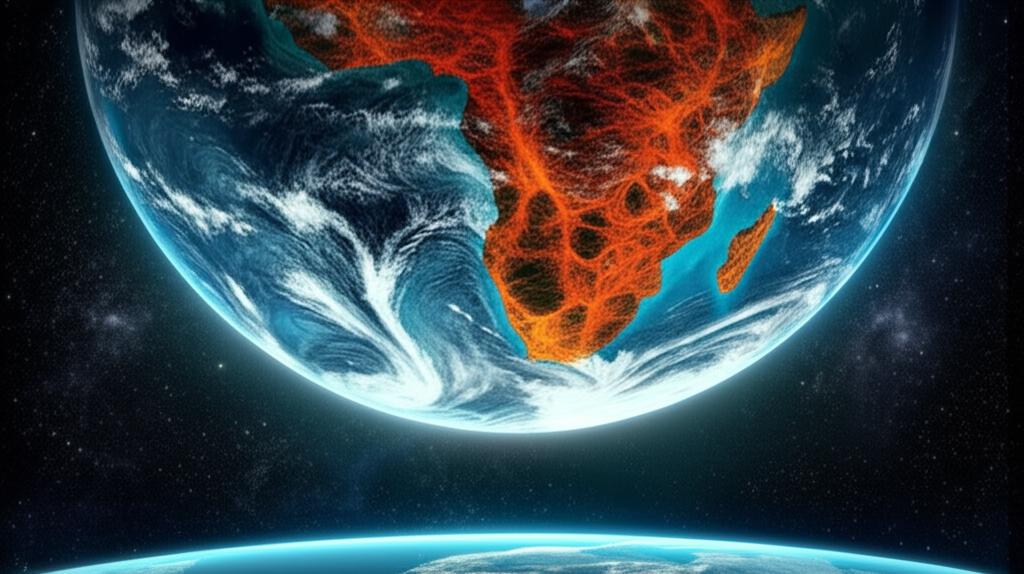Beneath our feet, a colossal, slow-moving engine of carbon has been shaping our planet's climate for eons. This isn't science fiction; it's the Earth's deep carbon cycle, a complex system of geological processes that shuttles carbon between the surface, the oceans, and the planet's interior. Recent discoveries are shedding new light on this subterranean world, revealing its profound influence on long-term climate stability and offering tantalizing clues about Earth's past and future.
For too long, our understanding of the carbon cycle has been largely surface-deep. Yet, scientists now estimate that more than 90% of Earth's carbon is locked away in the crust, mantle, and even the core. This vast reservoir isn't static; it's a dynamic system with carbon constantly moving and transforming.
The Great Carbon Conveyor BeltImagine a giant conveyor belt. At the surface, carbon is drawn from the atmosphere by natural processes. For instance, silicate rocks react with rainwater and atmospheric carbon dioxide, a process called weathering, which removes CO2. This carbon, often in the form of carbonates, eventually finds its way into the oceans.
A crucial part of this conveyor occurs at subduction zones – areas where tectonic plates collide and one dives beneath the other. These zones act like massive filtration systems, dragging surface carbon, including ancient limestone and organic matter, deep into the Earth's mantle. Recent research indicates that the Earth's gradual cooling over billions of years has significantly impacted how effectively these subduction zones transport carbon into the interior.
Once in the mantle, this carbon doesn't just disappear. It can be stored in various forms, including as part of minerals, dissolved in melts (magmas), or even as diamonds. In fact, some of the largest and most valuable diamonds are believed to form hundreds of kilometers deep within the Earth, offering scientists tiny, precious windows into the deep carbon cycle. Astonishingly, researchers have found that the mantle may contain up to a million times more carbon than the atmosphere.
Volcanic Vents and Climate RhythmsThe return journey for this deep carbon often occurs through volcanic activity. Volcanoes, mid-ocean ridges, and undersea vents act as escape routes, releasing carbon dioxide back into the atmosphere. While these natural emissions are minor compared to human-caused emissions on short timescales, they play a substantial role in regulating atmospheric composition and climate over geological eons.
New modeling studies are helping scientists understand how these deep carbon emissions have influenced Earth's climate over the past billion years. Periods of increased carbon release from the deep Earth often line up with warmer periods in our planet's history, while lower outgassing can coincide with colder eras, including "snowball Earth" events. The breakup of supercontinents like Pangea, for example, is thought to have allowed large amounts of carbon dioxide to be released, contributing to warming.
Beyond Rocks and Magma: A Hidden BiosphereThe story of deep carbon isn't just about geology; it's also teeming with life. Scientists have discovered a vast and diverse microbial biosphere thriving miles beneath the surface, in conditions of extreme pressure and temperature. These "extremophiles" could outnumber all life in the oceans and play a significant, though still poorly understood, role in subterranean carbon transformations. They might even draw sustenance from abiotic methane (methane not produced by living organisms above) and other energy sources derived from rocks.
New Discoveries, New QuestionsRecent advancements in seismic imaging, high-pressure experiments, and the analysis of tiny mineral inclusions trapped in diamonds are constantly rewriting our understanding of the deep carbon engine. Scientists are learning that CO2 deep below the surface may be more reactive than previously thought, especially when confined in nano-porous minerals with water. This has implications not only for natural carbon cycles but also for potential carbon storage solutions.
For example, researchers are investigating how carbonatite melts (molten carbonate rocks) derived from subducted slabs interact with the mantle. Depending on the mantle's temperature and redox conditions (its tendency to gain or lose electrons), these interactions can lead to the formation of diamonds that stabilize ancient parts of continents (cratons) or, conversely, weaken the lithosphere and trigger volcanic activity.
Even the way carbon is stored in deep-sea limestones, long considered a major carbon sink, is being re-evaluated. Microscopic dissolution seams have been found to release a portion of this stored carbon, though where it ultimately goes is still under investigation.
The Future is DeepUnderstanding the Earth's deep carbon engine is more critical than ever. It provides a crucial long-term perspective on climate change, helping us differentiate natural climate variability from human-induced changes. The geological record clearly shows that atmospheric greenhouse gas concentrations are the planet's long-term climate regulation system.
Furthermore, the secrets locked within the deep carbon cycle could hold keys to innovative solutions for mitigating current climate change, such as secure, long-term underground carbon storage. By studying how Earth naturally manages carbon on a grand scale, we may learn to better manage our own impact on the global carbon budget.
The Earth's deep carbon engine is a testament to the planet's intricate and interconnected systems. As we continue to explore this hidden realm, we are not just uncovering the secrets of subterranean climate control, but also gaining a more profound appreciation for the delicate balance that makes our world habitable.

